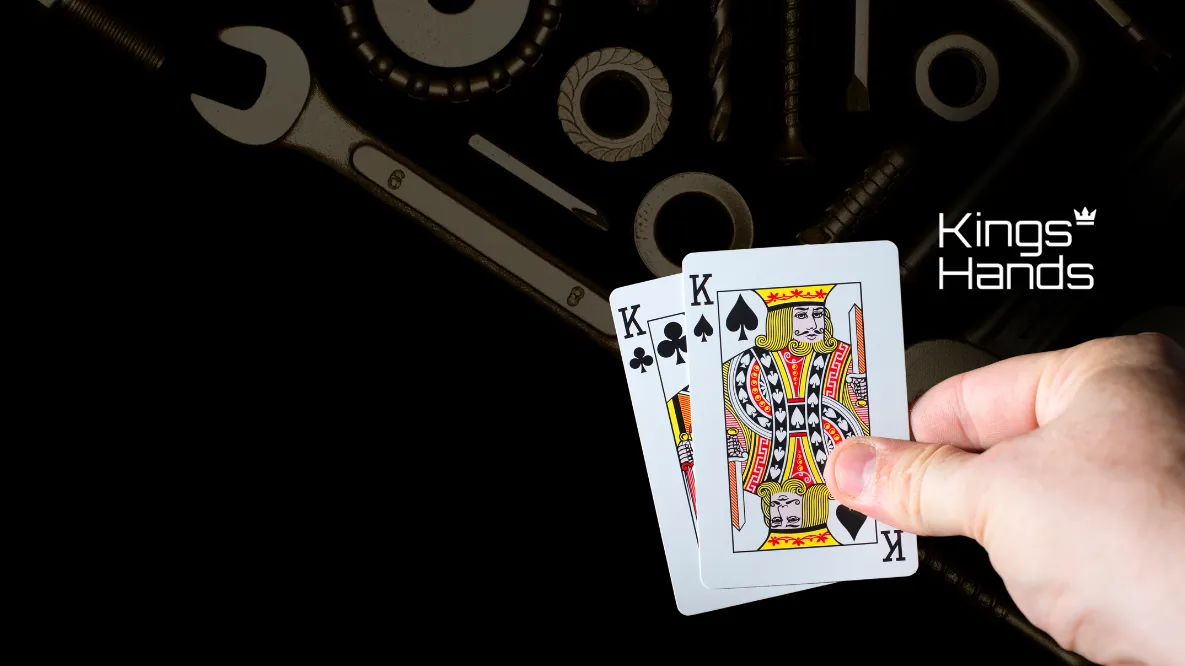In poker it pays to know who you’re up against.
In this era of GTO study and high stakes crushers endlessly poring over algorithmic solvers, you might be forgiven for forgetting that you should play exploitative poker wherever you possibly can.
Exploitative poker is simply taking advantage of weaknesses or patterns in your opponents’ play which you can adjust to and play back against with certain strategic adjustments.
Any exploit can be re-exploited by your opponent, if they notice the adjustments you are making, and most will not especially at the lower stakes. This is exactly why we should aim to play exploitatively rather than blindly following charts and sizings.
Hence in the toughest games running, the best against the best tend to play quite close to “balanced” solutions for poker strategy, “GTO” or Game Theory Optimal solutions which attempt to protect all ranges being used so as to make them unexploitable by their excellent and perceptive opponents.
It’s worth noting at this point that at the highest stakes of all, exploitative play is still a thing. The exploits are simply better chosen, more disguised, and more carefully selected.
Is it still worth studying GTO for the midstakes? Hell yeah. You just have to know you’ll have good reason to constantly deviate from it. You’ll also need to simplify your strategies to make them more executable in-game.
In the lower stakes, and even in some softer bigger buy-ins, there are just countless opportunities to play exploitative. Let’s look at some of the classic villains you’ll encounter, and some good simple adjustments worth making against them, which lead us quite far from GTO or balanced play.
The Passive Fish
Anyone doing much open-limping preflop would automatically fall into this category. Superficially this beginner’s strategy appears logical – invest the least to see the flop often. However these players haven’t grasped the significance of aggressive play in poker – we can thin the field to the flop, demand our opponents make equity decisions and possibly mistakes, take initiative and take down the flop pre if we raise, but not if we limp.
You want to raise versus these guys with a wide range especially in position, and try to get them heads-up to the flop. This is known as isolation raising. Postflop you can play straightforwardly aggressive versus them, but bear in mind that passives tend to fall into two broad categories: those who want to see a flop but then play “fit or fold” to the flop (meaning they either hit or give up frequently), and those who are just passive postflop too and don’t have much of a fold button.
Versus type A a simple adjustment is to fire every flop small and then evaluate turn (except the wettest boards perhaps), and versus type B the deviation from GTO is very major – we go big for value, thin for value (betting hands which would be marginal for value versus better opponents – even 3rd or 4th pair can be good for value versus very passive players), and we rarely bluff them except in very scary scenarios for their range.
The Nit
These guys are fewer on the ground than they used to be in poker, but they’re around. They simply play way too tight. The default deviation versus these opponents is to pressure them with a much wider range preflop (BTN vs. Blinds for example), and to also put the pressure on postflop but bearing in mind that their continuing range on each street will be stronger than that of the average player.
This will mean, for example, that we expect our flop bets with air to get through more often but we also expect our third barrels in a triple barrel bluff to probably work a good bit less often as they will have already folded so many mid-strength hands by the river. So in principle we should keep our bluffs active and aggro versus nits but to expect them to get to later streets (and even to flop) relatively strong.
The Mediocre TAG
Players who are basically competent but just uninspired middle-of-the-road regulars will tend to play reasonably well, and fairly tight-aggressive but they will make mistakes such as failing to raise flop with high enough frequencies OOP heads-up to the flop, and overfolding to pressure across multiple streets on certain runouts. This is straying into tougher territory but you will tend to find that they reveal their hand strength is capped on certain board runouts where they merely call down (especially on wetter flops) and you can pile pressure on here, especially with the right blocker combos of your own. These guys will often overfold to second barrels or judiciously chosen triple barrel bluffs.
The Spewy LAG
Not all loose aggressive players are good at poker. In fact, the loose aggressive mode is probably the hardest (and potentially the most profitable) to play in poker. It’s also in vogue. The past few years, you’ve definitely seen an increase in players who don’t have strong fundamentals but nevertheless play loose and aggro. These guys are admittedly more difficult to play against than passives or nits. Variance will be higher against them, but so will value if you muster a good set of adjustments. Of course, one of these is picking spots simply not to open into them, since you know they’re 3betting wide, or alternatively, finding spots to 4bet or 5bet them light. Part of it is also being willing to look them up postflop with a weaker value hand than usual, if you’ve seen them continue their loose aggro tendencies postflop with some consistency.
How do you play versus these opponents? Can you think of any I’ve missed?
Drop into thePokerDeals Discord to let us know!
Good luck out there, and Season’s Greetings!





















